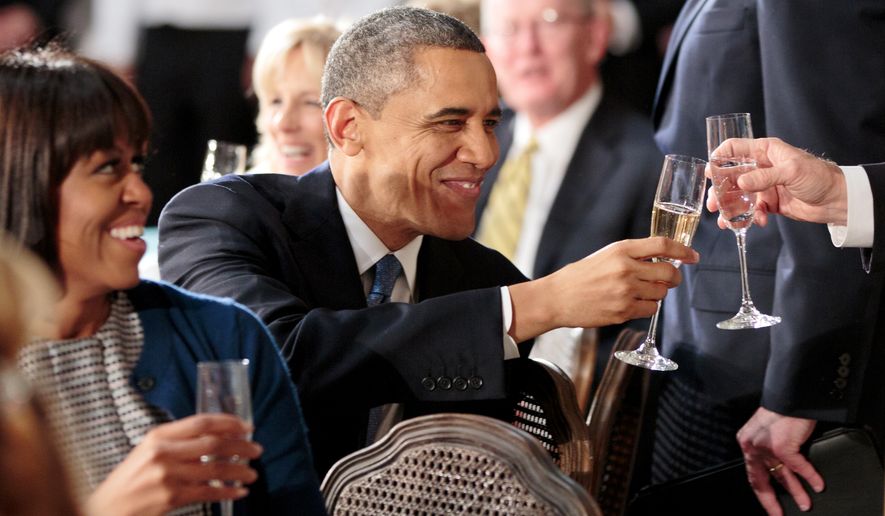The federal government collected a record amount of taxes in fiscal year 2014, topping $3 trillion in revenue for the first time in its history, according to Treasury Department numbers released Wednesday that show the influx helped drop the deficit to its lowest level under President Obama.
The recovering economy was the key, sending personal and corporate incomes higher — and thus sending more money to Washington. Individual taxes rose 6 percent and corporate-income taxes, which are the best indicator of a business recovery, leapt 17 percent.
Just five years ago, the Treasury took in $2.1 trillion, but fiscal year 2014, which ended Sept. 30, saw the final take at $3.020 trillion. The government spent $3.504 trillion, leaving it $483 billion in the red. That’s down from $1.4 trillion in 2010, and is the lowest figure since 2008.
Treasury Secretary Jacob Lew took a victory lap over the numbers, saying Mr. Obama’s success in hiking taxes helped spur the better news.
“The president’s policies and a strengthening U.S. economy have resulted in a reduction of the U.S. budget deficit of approximately two-thirds — the fastest sustained deficit reduction since World War II,” Mr. Lew said.
The $3 trillion mark wasn’t a surprise — both the White House Office of Management and Budget and the Congressional Budget Office anticipated it. But it still marks a milestone in government revenue.
PHOTOS: See Obama's biggest White House fails
“Every one of those $3 trillion is sucked out of the private-sector economy and makes the private sector smaller,” said Chris Edwards, director of tax-policy studies at the Cato Institute. “The $3 trillion isn’t free. It comes out of our pockets and from the private economy.”
The $3 trillion mark is, however, a sign of economic vibrancy, at least for corporations and those at the top end of the wealth scale, who analysts said are the first to feel the effects of an expansion.
“When times are bad and the economy shrinks, revenue shrinks by even more,” said Richard Kogan, a senior fellow at the Center on Budget and Policy Priorities. “Vice versa, when times are good and GDP is increasing, incomes are increasing, that has the effect of raising effective tax rates. So that the tax code itself works as an automatic stabilizer.”
The government first hit the $1 trillion revenue mark in 1990, then hit the $2 trillion mark in 2000. But President George W. Bush’s tax cuts and the bursting of the 1990s Internet bubble cut into revenue, dropping it to $1.8 trillion in 2003, before it began the shaky climb to $3 trillion.
Just five years ago, in 2009, the trough of the recession, revenue was only $2.1 trillion. That means it’s leapt $900 billion in just five years.
Spending, meanwhile, has remained relatively flat at about $3.5 trillion.
PHOTOS: Conservatives in Hollywood: Celebrities who lean right
Mr. Obama fought for higher personal income-tax rates in 2012, winning a postelection deal in the so-called “fiscal cliff” debate that saw income taxes hiked for the wealthiest, and payroll tax hikes for everyone.
Meanwhile, Washington is engaged in a major debate over marginal corporate-tax rates, which are the highest among the world’s major economies.
Mr. Edwards said that given the globalization of the economy, companies and wealthy individuals can more easily move their money, making it tougher for governments to try to squeeze more money from them through tax hikes.
“I don’t think the government’s going to get any more out of the American economy. The only way Europe does is because they have the VAT taxes,” Mr. Edwards said, referring the Value Added Tax system that is prominent on the Continent. He predicted VAT would be the next big tax battle in the U.S.
• Stephen Dinan can be reached at sdinan@washingtontimes.com.




Please read our comment policy before commenting.